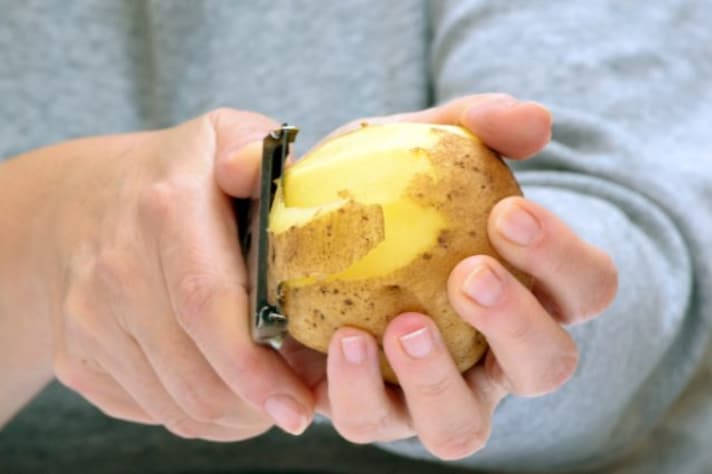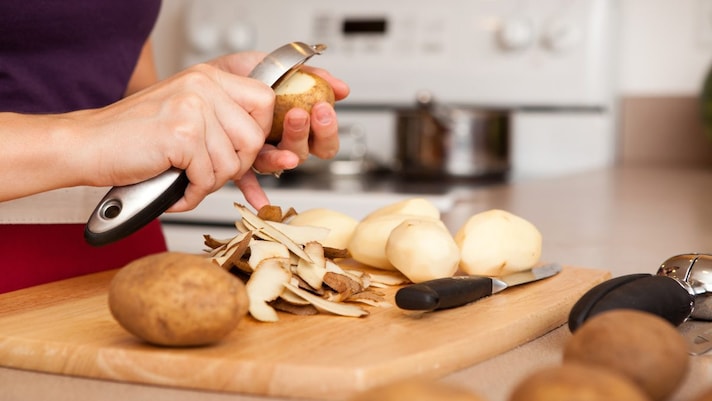Do You Really Need to Peel Your Potatoes?
Peeling potatoes is a common kitchen habit, but is it always necessary? While potato skins contain valuable nutrients like fiber and potassium, they also add texture and flavor to many dishes. From nutritional benefits to environmental impact, the decision to peel your potatoes may depend on the dish and personal preference—sometimes, leaving the skin on is the better choice.
;)
Potatoes are one of the most versatile vegetables in the kitchen, used in countless dishes around the world. But when it comes to preparing them, there's a common question that arises: Should you peel your potatoes?
Peeling potatoes is a standard practice for many recipes, but does it really need to be done every time? The truth is, there’s much more to the decision than just aesthetics. Let's explore whether peeling potatoes is necessary and why you might want to reconsider it.
The Nutritional Value of Potato Skins
The first and most compelling reason not to peel your potatoes is the nutritional value of the skins. Potato skins are packed with important nutrients like fiber, potassium, and antioxidants. In fact, most of the fiber in a potato is found in its skin—about 50% of the potato’s fiber content comes from the peel.
Additionally, the skin contains potassium, which is essential for heart health and maintaining a healthy blood pressure. It also contains vitamin C, albeit in smaller amounts than the flesh. By peeling your potatoes, you are essentially throwing away these valuable nutrients.
So, if you’re trying to boost your fiber intake or increase the nutritional value of your meals, keeping the skin on is a simple and effective way to do so.

The Environmental Impact
Another reason to keep your potato skins is the environmental benefit. Peeling potatoes creates extra food waste that needs to be discarded. While it’s true that potato peels are compostable, they still take up space in landfills and contribute to food waste.
In contrast, when you leave the skins on, you're minimizing waste and making the most of the whole vegetable. This practice supports sustainability, reducing your environmental footprint—an important consideration as more people strive to live more eco-consciously.
Texture and Taste—Do Skins Affect the Flavor?
When it comes to texture, potato skins can actually enhance the dish. In some recipes, leaving the skins on adds a slightly earthy, robust flavor that complements the softness of the potato flesh. Think of roasted potatoes with the skin on, where the outer layer becomes crispy, providing a satisfying contrast to the tender interior.
That said, in some dishes, the skin might not be as desirable. For example, mashed potatoes might be better with peeled potatoes for a smoother consistency. But for most other preparations—whether you’re making roasted potatoes, fries, or a baked potato—the skin contributes to both flavor and texture.
The bottom line: If you love the crispiness of roasted potatoes or the hearty texture of a baked potato, there’s no need to peel. It’s a bonus, not a nuisance!

A Common Myth: Skin Harms Digestion
A common myth that leads people to peel potatoes is the belief that the skin is hard to digest. In reality, potato skins are fully digestible and provide important dietary fiber that helps with digestion. The fiber in the skin can actually help regulate your bowel movements and promote a healthy gut.
Unless you have a specific digestive condition, there’s no need to worry about the digestibility of the potato skin. It’s a healthy addition that can aid in your overall digestion.
Practical Advice: When Should You Peel Your Potatoes?
While there are plenty of benefits to leaving the skin on, there are times when peeling potatoes is necessary or simply a matter of preference. Here are a few practical guidelines to consider:
- Young potatoes (new potatoes): These have thin, tender skins that are often left on in recipes like potato salads or roasted potatoes.
- Mature potatoes: If you're using larger, older potatoes, their skins can sometimes be thicker and tougher. Peeling them might make sense for certain dishes, like mashed potatoes, where a smoother texture is preferred.
- Personal preference: If you’re not a fan of the texture or appearance of the skin, feel free to peel. But if you’re okay with the skins, you’re better off leaving them on.
- Clean thoroughly: If you’re concerned about dirt, give your potatoes a good scrub with a vegetable brush before cooking. Most of the dirt can be easily removed without peeling, so you can still retain all the nutrients.
The Verdict: Should You Peel Your Potatoes?
In short, you don’t always need to peel your potatoes. Whether or not you peel them depends on your personal taste, the type of dish you’re preparing, and your desire to maximize the nutritional value of the potato.
If you’re looking for a healthier, more sustainable option, keeping the skin on is the way to go. Not only does it add a nutritional boost, but it also improves the texture and flavor of many dishes. Of course, if you prefer the smoothness of mashed potatoes or another recipe calls for peeled potatoes, peeling is perfectly fine.
So, the next time you reach for the peeler, ask yourself: Do I really need to?

;Resize,width=767;)


